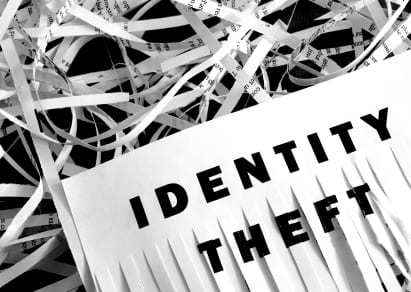Mortgage and Identity Theft
MORTGAGE FRAUD RED FLAG
- Client delays, makes excuses or will simply not provide photo ID, when requested.
- Land title records do not match with seller information.
- Buyer’s or seller’s name are only partially indicated-last name appears without a first
- name or the first name is indicated by only an initial.
- Client attributes name differences to inconsistent or improper English translation of
- Buyer purchases property far from place of employment for no apparent reason.
- Buyer is purchasing many properties with high ratio mortgages, using different names or variations of his/her name.
- Source of deposit cheques is other than buyer.
- Deposit is provided in cash or by money order.
- Buyer purchases investment property, yet does not own a principal residence.
- Parties have no formal office; communication is by cell phone, email and fax; meetings are scheduled at restaurants.
- Buyer or seller is represented by a person acting on a power of attorney.
- Quick succession of trades on one property.
- One lawyer represents both parties to the transaction.
- Immediate possession dates.
- Firm transaction with none of the usual conditions.
- No counter offer
- Names appear to have been added to or deleted from the contract.
- Not all parties named on the contract have signed it.
- Schedules or addendums exist but are not indicated in the contract, or schedules or addendums do not reference the originating contract.

DOCUMENT VALIDATION CHECK
Ontario Drivers Licenses
The last five digits on the license should be the license holder’s date of birth in reverse, see below:
Drivers license number X9210-74465-41011.
Letter matches 1st letter of last name.
Date of birth will be 1954-Oct 11th.
For a female you add 50 to the month, in other words the above driver’s license would read:
Drivers license number X9210-74465-46011.
The date of birth should be duplicated on the bottom of the driver’s license, where the date of birth is clearly indicated.
Quite often just the front of the drivers license is cleaned on a counterfeit license, the rear isleft untouched, this is typical where the front of the card is ‘washed’ and new data added.
- Check the expiry date of the license on the rear of the card; it usually expires on the birth date of the person to whom it was issued.
- Check also the signature on the reverse side of the card; it should match the signature on paperwork unassociated with the license. Such as the agreement of purchase andsale AND the signed mortgage application documents.
- On the face of the card, is the Ontario trillium in the form of a hologram; this should be clearly visible as the card is moved around in the light. The hologram should be in onepiece without any breaks in it. New cards have a numerous smaller trilliums with theword ‘Ontario’ added. Again these should be undamaged and clear to read.’
- On the face of the license, beneath the word Ontario Drivers License is a feint linet hat extends the width of the card above the picture. A real license will have the word ‘Ontario’ in micro printing across the whole license.
- Similarly, on the rear of the driver’s license, beneath the blue area that contains the word ‘Licensee’s Signature’ the word ‘Ontario’ can again be found in micro printing. Both of these lines require a magnifying glass to view, they cannot be seen with the naked eye.
IDENTITY THEFT RED FLAG
- A creditor informs you that an application for credit was received with your name and address, which you did not apply for.
- Telephone calls or letters state that you have been approved or denied by acreditor that you did not apply for.
- You receive credit card statements or other bills in your name, which you did not apply for.
- You no longer receive credit card statements or you notice that not all your mail is delivered.
- A collection agency informs you that they are collecting for a defaulted account established with your identity and you never opened the account.
- Financial account statements show withdraws or transfers that you didn’t make.
- You apply for credit and are turned down for reasons that do not match your understanding of your financial position.
- Inconsistencies on your credit report, such as inquiries from companies that you haven’t requested products or credit from, debts, or collection that you are not aware of.
Fraud & Identity Theft Fact Sheet
To protect yourself consider posting a “no solicitors, or peddlers” sign. If you do speak to a door to door salesperson remember these do’s and don’ts:
DO
- Get their names and company information
- Obtain 2 to 3 written estimates before you sign a contract
- Seek advice from your family, friends or police
- Check out references through a site visit and talk to the homeowner
DON’T
- Be rushed or pressured
- give them a credit card number or showa copy of an existing bill
- rely on phone numbers supplied to you
- pay for work in advance

PERSONAL FRAUD OR IDENTITY THEFT
Personal fraud or identity theft is the fastest growing crime in Canada. Personal fraud can occur when a dishonest person gets a hold of your personal or credit card information anduses it to their advantages to make purchases or obtain funds. Some of the worst cases of personal fraud are identity theft. Identity theft occurs when a dishonest person uses your personal information to open a bank account, obtain credit cards or otherwise take advantages of your credit rating. Any type of personal fraud can ruin your credit rating. In order to reduce the chances that you will become a victim of personal fraud, follow this do’sand don’ts.
DO
- Be extremely careful before you decide to give out personal information
- Treat your social insurance card and birth certificates as you would any valuable and store it in a safe place under lock and key
- Carry only the credit cards you need and cancel the ones you don’t
- Consider buying a shredder
- Shred your financial statements, personal information and credit cards after they expire
- Watch how sales people swipe your credit card and make sure that a second machine is never used
- Take precautions when performing online transactions, be sure the site is secure, a privacy policy is posted and the company is known to be reputable
- Carefully check your monthly statements for any unauthorized or missing transactions
- Call the credit card company immediately if your bills don’t arrive or you applied for a new credit card that hasn’t come
- Have your mail picked up by a trusted neighbour or go to your local post office (with identification) and ask for Canada Post’s “hold mail” service, if you are going away
- Watch for people looking over your shoulder when using your personal identification number (pin) and avoid writing this number down or storing it in your wallet
- Protect your personal computer with a firewall
- Beware of e-mail messages and promotions that ask for personal information
- Conduct an annual credit check on yourself through the two national credit reporting agencies: Equifax Canada: 1-800-465-7166, www.equifax.ca or TransUnion ofCanada: 1-800-663-9987, www.tuc.ca
DON’T
- Carry your social insurance card and birth certificate on your person unless absolutely necessary
- Leave credit card receipts behind or throw out financial or personal information without first making it unreadable
- Use your birth date or house address number for your pin number
- Give out your phone number, address, credit card number or SIN number on the internet
- Put personal information including photos, on your website
Contacts for More Information: Ontario Ministry of Government Services (Consumer Services Bureau): 416-326-8800 or http://www.mgs.gov.on.ca/en/News/180548.html or Canadian Bankers Association: 416-362-6092 or www.cba.ca. Contact your local police department for specific concerns or cases.
